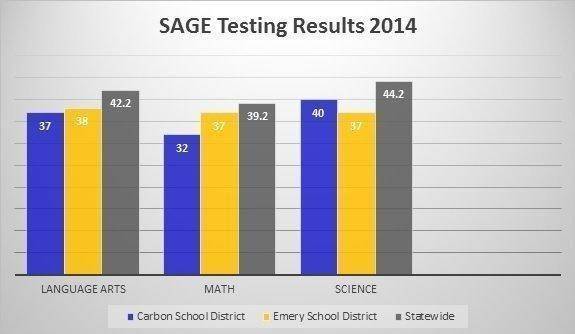SAGE testing, which was developed specifically for Utah students, is now under fire by the same legislators who pushed in favor of it just last year.
SAGE, an acronym for Student Assessment of Growth and Excellence, is a comprehensive testing system developed by Utah educators designed to test knowledge in math, science and English language arts for grades 3-12.
According to the Utah Educators Association, hundreds of educators were involved in developing SAGE and the tests were administered for the first time in spring of 2014.
However, after testing concluded, there were several concerns from educators. In a survey conducted in May 2014, many teachers complained of technical glitches, lack of accommodations for special education students, inconsistent testing protocols and a lack of clear communication with teachers.
With the 2015 legislative session in full swing, Senators Howard Stephenson and Aaron Osmond are calling for a suspension of the new system, a system they voted in favor of just last year.
Locally, Carbon and Emery school districts performed below the statewide average and many local administrators aren’t happy with the current system.
Larry Davis, principal at Emery High, said he feels it is encouraging that the legislature is having second thoughts.
“I’m not afraid of accountability, or finding out where our students stand as far as their knowledge of core curriculum goes, but the current system is flawed,” Davis said. “My opinion is in favor of backing off until the major bugs are fixed.”
Davis echoed the complaints of other educators, claiming technical difficulties and issues with the content, especially on the writing exam.
According to Davis, many of the writing prompts are long and too confusing for many students to understand. Students of all learning levels are tested using the same standards and many honors students are choosing to opt out of the tests altogether, which skews the overall school grade.
Davis said SAGE testing does not allow for a level playing field. There is no room for special accommodations, which is a severe disadvantage to those students who learn at a slower pace than their peers.
Teachers are expected to teach certain standards but with the rigorous testing schedule which begins in February with the writing portion of SAGE and continues through most of April with the math and science sections, Davis said there is too much instructional time being lost to testing.
“Teachers don’t have time to teach all the curriculum these students are supposed to be tested on because they’re in the middle of testing, if that makes sense,” Davis said. “It’s too structured. There is no flexibility for students to explore or engage in new or creative ways to learn.”
Davis said he thinks it would be a good idea for the state to take a step back and take a thorough look at what’s really going on inside these schools.
“I’ve never had anyone from the legislature come talk to me to try and figure out what’s best for my students, and I see that as a problem that can easily be fixed,” Davis said. “Like I said, I’m not afraid of accountability but I think this whole system has just been too much too fast.”
On the other hand, however, Stacy Basinger, principal at Bruin Point Elementary, feels that SAGE Testing is a better representation of a student’s depth of knowledge.
“The old system tested on a “surface level”. It was only a multiple choice test. The SAGE test incorporates multiple types of questions including multiple choice, short answer, essay, creating diagrams, charts, tables, etc.,” Basinger said. “In order to complete the variety of question types correctly, the student must have some definite knowledge about the material being asked.”
Basinger did agree that there were technical hiccups, but she felt that the Carbon School District did well to try to accommodate the issues.
“I do not think the lower scores reflect that there is something wrong with the test or that teachers are teaching the standards wrong,” Basinger said. “The test is much more rigorous and in a new format that students are becoming more familiar with.”
Basinger said she fully expects the scores to improve each year as teaching methods improve and students become more comfortable using the format of the test.

